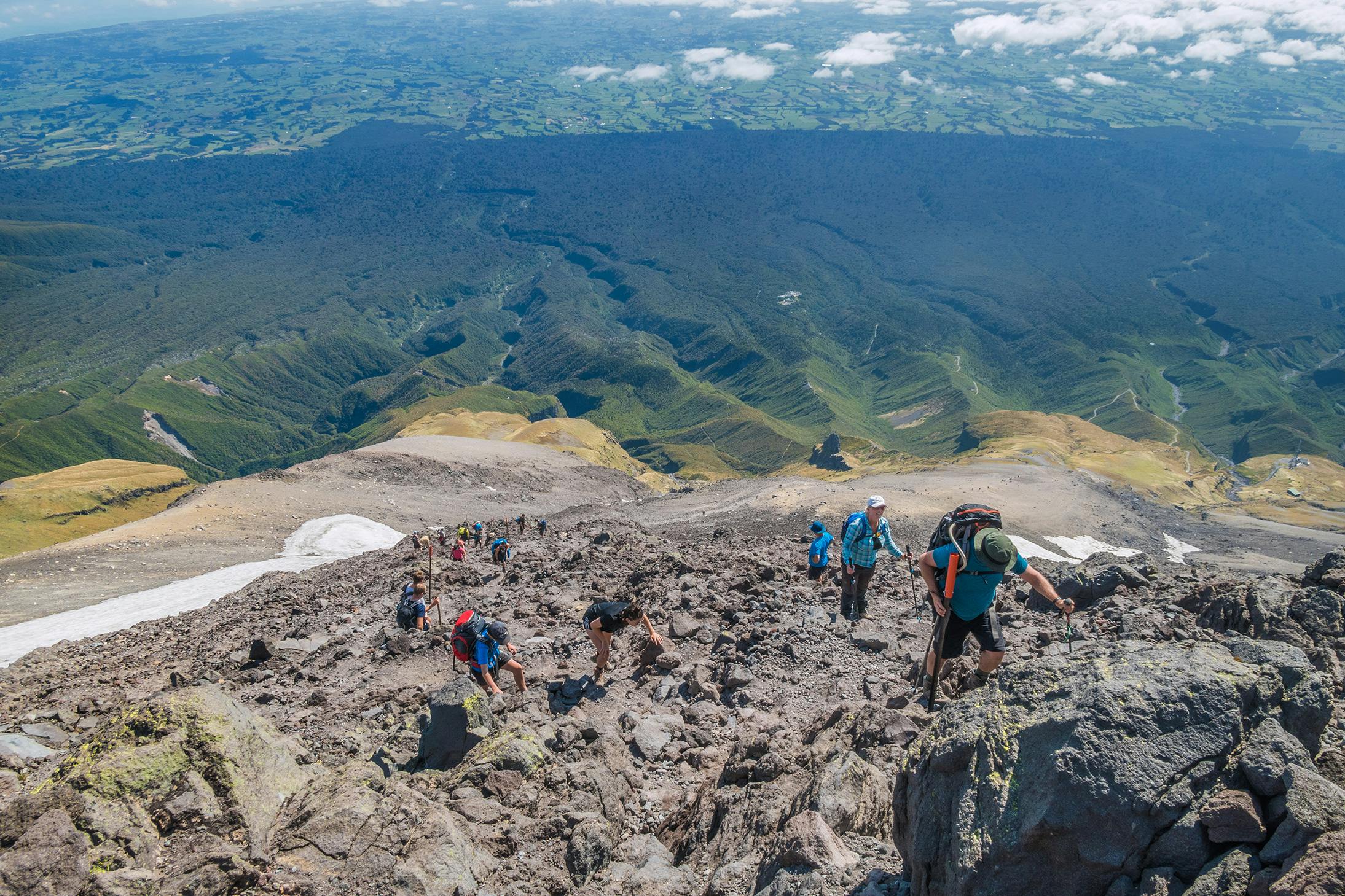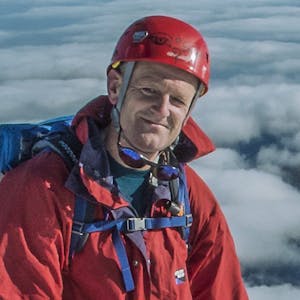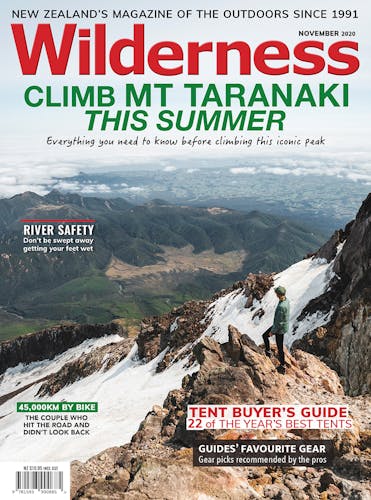Having completed multiple ascents in all seasons, Peter Laurenson knows how to best enjoy a summer climb of Mt Taranaki
Last January I completed my 11th climb of Mt Taranaki. That might sound like a lot, but it’s far from notable when you consider quite a few local climbers lay claim to more than 100 ascents. Chris Prudden, who is now based in Queenstown, guided on Taranaki for over a decade and has climbed the mountain more than 1000 times.
I’ve climbed via several routes in summer, spring and winter and have got to know and love the mountain more each time.
In winter, or when weather conditions are bad, the mountain can be a serious challenge for experienced mountaineers. By comparison, on a fine summer day, a climb from the North Egmont Visitor Centre via the Puffer, Hongi Valley, the scoria face and The Lizard can be undertaken by hundreds of people. The North Egmont route is most popular partly due to its easy access, the non-technical terrain, and its increasingly well-known reputation in social media and tourist guides.
Such a busy place is not my idea of fun. One of my fondest memories on the summit was in mid-winter, under a cobalt sky, with not another soul in sight. That’s a magic experience, but one only gained safely with prior mountaineering experience.
For most, the northern summer route will be the best way to safely experience the mountain’s summit. So how do you best tackle this route? The answer lies in taking into account a few essential truths.
Even though access is easy – along a sealed road all the way to the Visitor Centre car park at 900m – and some fit climbers complete the return trip in just five or so hours, there’s still a height gain of over 1600m to the 2518m summit. In good weather conditions, it typically takes between six to 10 hours return. So, based on your own fitness level – and that of the weakest member in your party – plan accordingly.
No matter what time of year you climb Mt Taranaki, in clear weather the terrain will focus you and the views will impress.
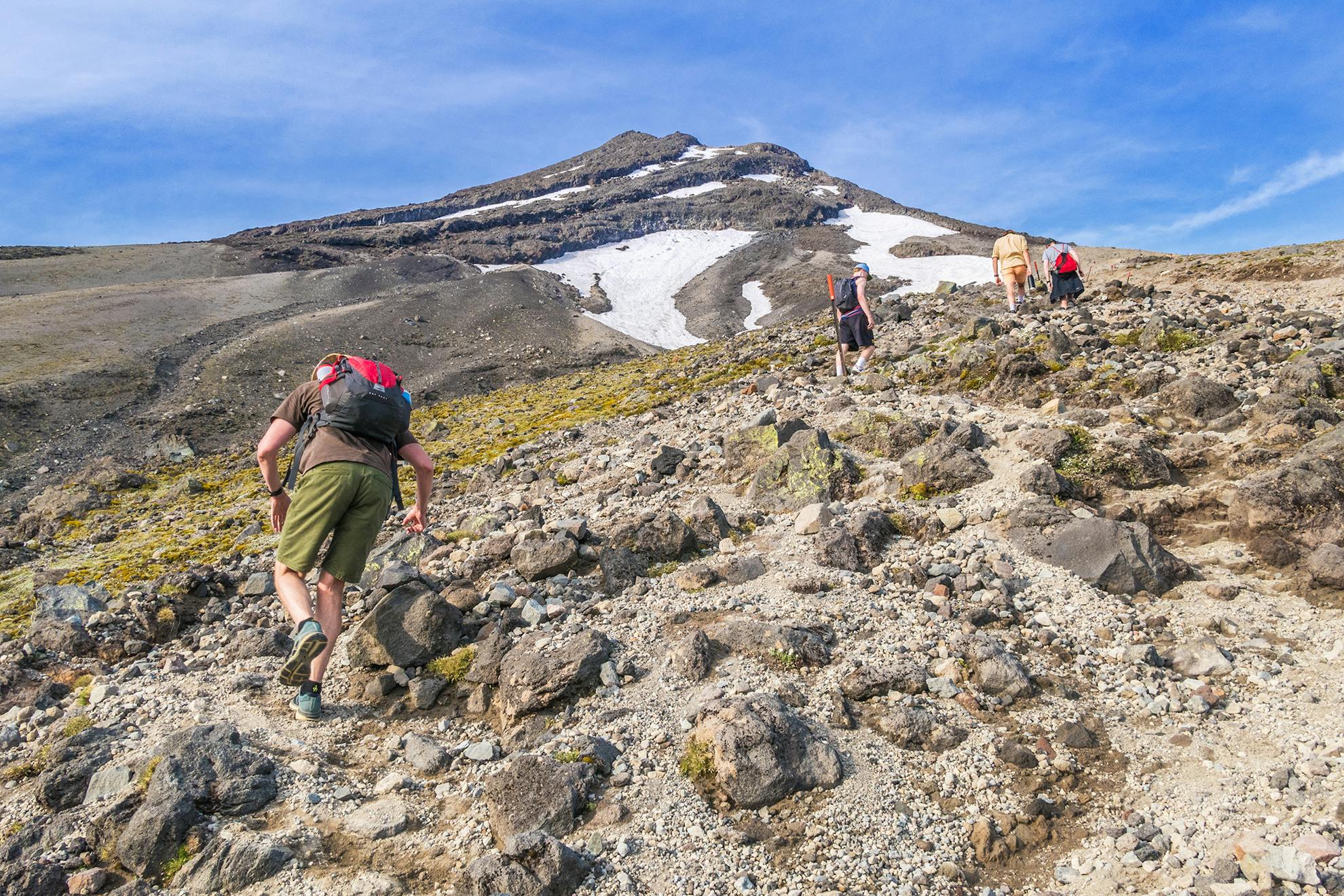
The early bird catches the worm
In the busiest weeks of summer, especially on fine days, weekends and public holidays, sometimes both the Visitor Centre car park and its overflow car park can be full soon after dawn. When I went up in January, setting off from the car park just before sunrise at 6am, there were only another four cars in the car park and only a few climbing parties ahead of us. But once the car parks are full, hikers have to park further down the access road, making the journey longer. There was talk of preventing private access in the busiest weeks in favour of shuttle buses, and this was trialed in 2019, but it hasn’t been made permanent yet. Regardless, in terms of climbing Mt Taranaki, it’s a case of the early bird catches the worm.
You need more water
There is zero shade after about 30-minutes walk from the car park. There is also usually no water supply beyond here. While Tahurangi Lodge looms up above the Puffer at 1520m, after one or two hours, this is a private locked lodge and there are no external taps available for public use. In summer, especially if the weather is clear,
it gets super hot on the slopes of the mountain. You need to carry sufficient water for the entire trip.
For me, that’s two or three litres.
Keep thinking
Wooden staircases give access to the scoria face above Hongi Valley. This is also where the poled route begins and is a good place to assess whether you’re still up for continuing the climb. If you’re planning for a six-hour round trip then you should reach the top of the stairs after no more than two hours. If you’re expecting to finish the trip after 10 hours, then it should take you no longer than three hours.
Remember, once on the scoria there is no shelter from the elements until almost inside the summit crater.
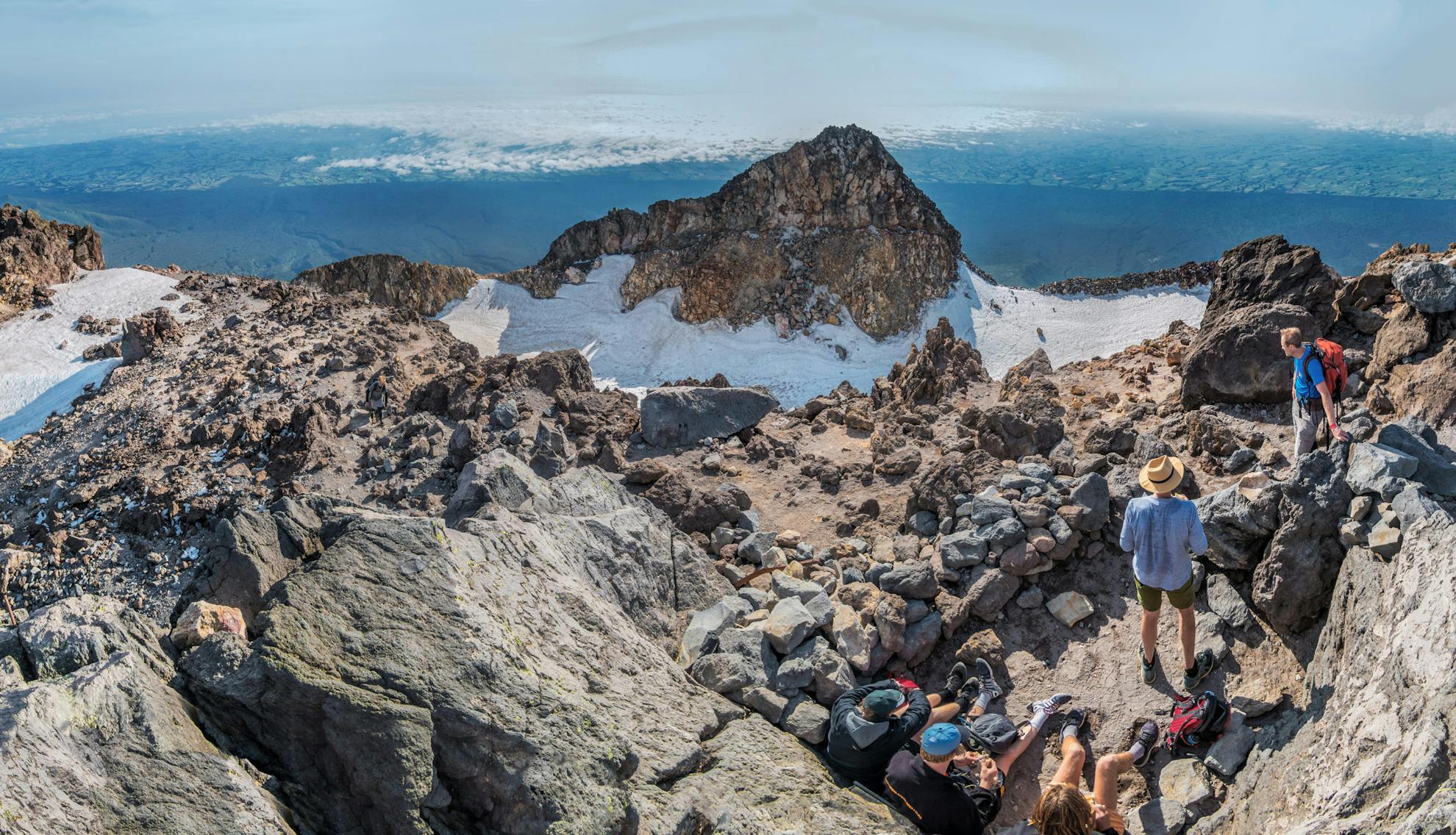
Boots, not shoes
The northern route may be non-technical, but that’s no reason to get complacent. You might be tempted to go ultralight in just a pair of running shoes, minimal food, water and extra clothing. Trouble is, being a volcano a good deal of Taranaki’s surface is covered in scoria and lava rock. This isn’t a problem in winter when the mountain is covered in snow and ice, but in summer it can be a major challenge.
Climbing scoria on a steep gradient is a bit like walking on ball-bearings – you can’t go fast without running the risk of a nasty skin-ripping fall and slide. And coming down is harder than going up.
The lava rock, encountered most prominently on the steep poled section known as The Lizard, is not as treacherous but is still rough and abrasive. It’s a good idea to bring gloves because you’ll be using both hands at times on this section and bare hands can suffer. Light tramping boots provide significantly better support than shoes. Gaiters will prevent sharp, niggly scoria from getting inside your boots.
Dress for success
Though plenty of inexperienced day walkers happily climb Taranaki, the mountain is still one of the deadliest in New Zealand. More than 80 fatalities and many more serious injuries and rescues have occurred there over the years. A combination of easy access, close proximity to the ocean and its associated rapid weather changes, and ignorance can end a climb in the worst possible way. So, even if the weather forecast is for a bluebird day,
don’t leave home without warm clothing and wet weather gear.
If you are blessed with a fine clear day, another factor to plan for is the jaw-drop. The view from the summit tends to do that to climbers, so you need to allow sufficient time up on top to enjoy the 360-degree panorama – and that’s when you’ll be grateful you packed a few extra layers. Cultural sensitivity requires people not to stand on the true summit.
Toilets
Make use of the toilets at the Visitor Centre or the portaloos (and their resident blowflies) near Tahurangi Lodge, because once you reach the wooden staircase taking you out of Hongi Valley and onto the scoria, you can forget about any privacy.
- Grade
- Moderate / Difficult
- Time
- 6-10hr
- Accom.
- The Camphouse (DOC, reservation required), just above the Visitor Centre
- Access
- Via North Egmont Road, to the Visitor Centre car park
- Map
- BJ29
GPX File
- Taranaki Maunga (gpx, 5 KB)
GPX File
- Your device does not support GPX files. Please try a different device.





